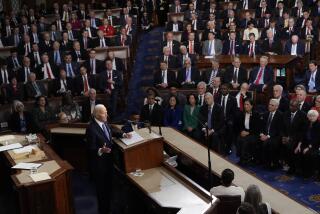5 things you need to know about California’s November jobs report

California employers added a net 44,300 jobs in November, posting strong job growth toward the end of the year, according to data from the state’s Employment Development Department.
The surge in hiring was largely in retail trade, part of the typical hiring uptick during the busy holiday shopping season. Construction and manufacturing both posted healthy job gains, both for the month and over the last year.
California’s unemployment rate also declined slightly to 8.5% in November, down from 8.7% the month before, state data show.
But what does this all mean? Here are five takeaways from Friday’s jobs report:
—November’s job gain of 44,300 is the largest monthly increase since October 2012, when employers added a net 53,400 jobs. It’s a big gain, by any measure, but it’s also important to keep in mind that monthly jobs figures are almost always revised.
October’s jobs report, for instance, was revised downward to show a net gain of 30,100 instead of the 39,800 as the Employment Development Department initially reported.
—Is seasonal hiring behind November’s big surge? It’s possible, two economists said. When the reports are compiled, labor market researchers try their best to adjust for seasonality using long-established statistical methods.
To get a better idea, look at the yearly trend, said Esmael Adibi, director of Chapman University’s A. Gary Anderson Center for Economic Research.
The trade, transportation and utilities sector — which includes wholesale and retail trade — has grown 1.6% over the last year, signaling that retail hiring has been steadily growing, Adibi said.
Upcoming jobs report should paint a clearer picture, said Stephen Levy, director of the Center for Continuing Study of the California Economy in Palo Alto.
“A lot of [the hiring] was in retail, and we don’t know how that’s going to wash out,” Levy said.
—Construction and manufacturing — two sectors with high-paying jobs — were bright spots in November’s report.
Construction has been largely boosted by the housing recovery over the last year. It’s the fastest growing sector in the economy, data show. Payrolls in this key industry have expanded 5.2% to 632,000 since November 2012.
That is, of course, nowhere near its pre-recession peak of 945,000 jobs, but the consensus is that California’s construction hiring levels will probably never return to that point. After all, the housing boom was unsustainable.
—Southern California is fully participating in the economic recovery, Levy said. For a long time, the recovery’s narrative in California was driven by the Bay Area’s rapid rise from the Great Recession. Much of the job growth was in high-tech jobs at firms headquartered in San Francisco and the Silicon Valley.
Los Angeles, Orange, San Diego, San Bernardino and Riverside counties all reported drops in their unemployment rates and added jobs.
L.A. County alone added 32,600 jobs in November, more than half of the state’s net job gains. Its unemployment rate, seasonally adjusted, declined to 9.5% from 9.7%.
Orange County has the lowest unemployment rate in Southern California. For November, its jobless rate declined to 5.6% from 5.8% the month before. It added 8,700 net jobs last month.
—Finally, some balance: November’s jobs report is encouraging and strong, economists said. But an 8.5% unemployment rate is nothing to be proud of. “We shouldn’t all congratulate ourselves yet,” Levy said. “It’s still a slow slog.”
California, which was among the states hardest hit by the housing bust and ensuing economic downturn, has not yet recovered all the lost jobs. But the state has made steady progress, economists have said.
Long-term unemployment is still stubbornly high, and at the end of the year federal unemployment benefits are set to expire and cut off benefits checks to 222,000 Californians, the Employment Development Department said.
In addition to providing a lifeline to the long-term unemployed, who are often overlooked by employers for their big employment gaps, the federal jobless benefits pump money into the economy.







